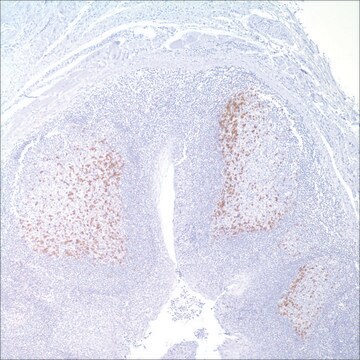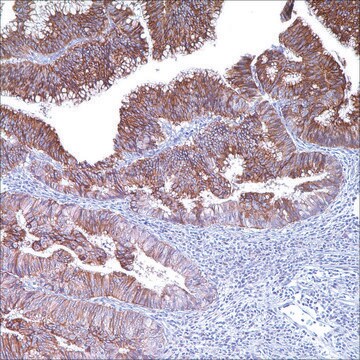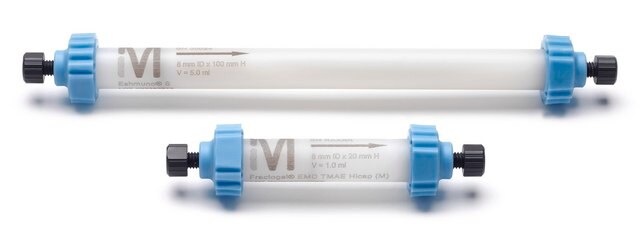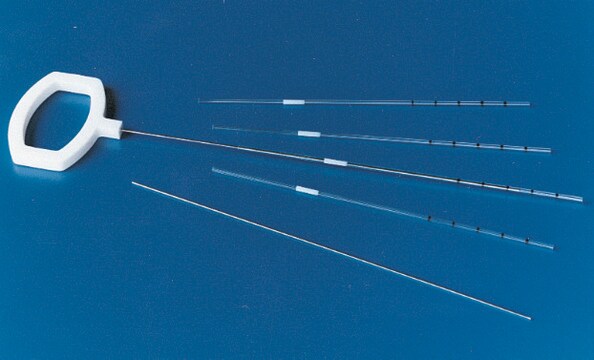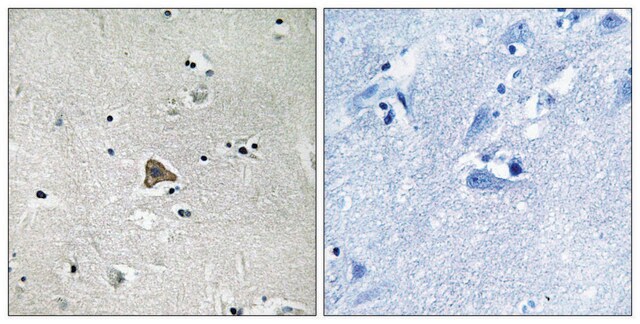D2191
Monoclonal Anti-DC-SIGN1 antibody produced in mouse
clone 120507, purified immunoglobulin, lyophilized powder
Sinónimos:
Anti-CD209, Anti-Dendritic Cell-Specific ICAM-3 Grabbing Non-Integrin
About This Item
Productos recomendados
origen biológico
mouse
Nivel de calidad
conjugado
unconjugated
forma del anticuerpo
purified immunoglobulin
tipo de anticuerpo
primary antibodies
clon
120507, monoclonal
Formulario
lyophilized powder
reactividad de especies
human
técnicas
flow cytometry: 2.5 μg using 106 cells
immunocytochemistry: 8-25 μg/mL
immunohistochemistry: 8-25 μg/mL using fixed cells and tissue sections
western blot: 1 μg/mL
isotipo
IgG2b
Nº de acceso UniProt
temp. de almacenamiento
−20°C
modificación del objetivo postraduccional
unmodified
Información sobre el gen
human ... CD209(30835)
Descripción general
Especificidad
Inmunógeno
Aplicación
Acciones bioquímicas o fisiológicas
Forma física
Cláusula de descargo de responsabilidad
¿No encuentra el producto adecuado?
Pruebe nuestro Herramienta de selección de productos.
Código de clase de almacenamiento
11 - Combustible Solids
Clase de riesgo para el agua (WGK)
WGK 1
Punto de inflamabilidad (°F)
Not applicable
Punto de inflamabilidad (°C)
Not applicable
Equipo de protección personal
Eyeshields, Gloves, type N95 (US)
Elija entre una de las versiones más recientes:
¿Ya tiene este producto?
Encuentre la documentación para los productos que ha comprado recientemente en la Biblioteca de documentos.
Nuestro equipo de científicos tiene experiencia en todas las áreas de investigación: Ciencias de la vida, Ciencia de los materiales, Síntesis química, Cromatografía, Analítica y muchas otras.
Póngase en contacto con el Servicio técnico
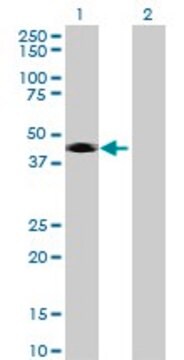
![Monoclonal Anti-DC-SIGN [8B6] antibody produced in mouse affinity purified immunoglobulin (IgG)](/deepweb/assets/sigmaaldrich/product/images/408/054/2fea9b2a-f2f3-4f45-8c12-4b9ba364f5f6/640/2fea9b2a-f2f3-4f45-8c12-4b9ba364f5f6.jpg)
